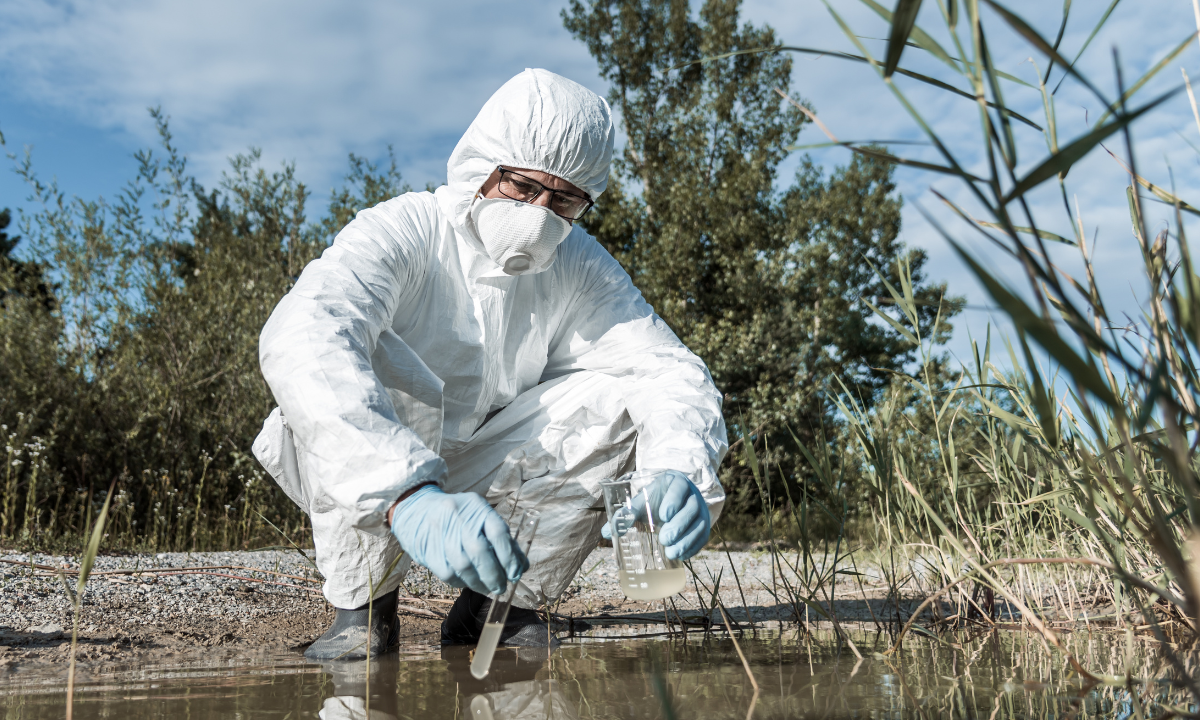by Chandler Blythe Duncan
For over a century, the U.S. army’s mishandling and careless disposal of hazardous chemicals in its bases have irreversibly impacted the health of numerous service members. Unperceived by them, armed forces and their families residing on contaminated military installations endured regular exposure to chemical hazards linked to incapacitating and fatal health conditions.
In well-known cases like Camp Lejeune in North Carolina, contamination went unnoticed for over 30 years and exposed about 1 million service members and their families to a slew of hazardous toxins known to trigger adverse health effects and debilitating diseases.
The Army’s Long-Lasting Contamination Issues
Camp Lejeune serves as the showpiece for extensive toxic contamination. From 1953 to 1987, its residents were unintentionally exposed to volatile organic compounds from degreasers, oil, industrial chemicals, decomposing solvents, and radioactive waste.
Onsite testing in the 80s uncovered over 60 toxins contaminating Camp Lejeune’s grounds in accumulations exceeding safety limits by 240 to 3,400 times, including benzene, vinyl chloride, perchloroethylene, trichloroethylene, and per/polyfluoroalkyl substances or PFAS for short. Extended exposure to such risks has been linked to several types of cancer (kidney, testicular, liver), hormonal disruptions, developmental problems in children, and even miscarriage. Camp Lejeune was designated a Superfund site in 1989 and remained functioning due to ongoing remediation efforts, although traces of toxins are still uncovered at several sites around the base.
Much of the contamination derives from the army’s reliance on aqueous film-forming foam AFFF to extinguish fuel fires and train firefighters. AFFF contains exceptionally high levels of PFAS, a class of synthetic compounds with highly durable structures that can imbue the soil and pollute drinking water sources, thus their name “forever chemicals.” More than 600 military facilities across the U.S. had PFAS-contaminated drinking water, and a recent study shows further aprox. 3000 military sites being presumably affected. Despite being a notorious example, the base is nowhere near the only army installation where dangerous substances put the lives of residents at risk.
In California, the aqueous film-forming foam (AFFF) used on the grounds of Naval Air Weapons Station China Lake posed drinking water contamination with PFAS. The EPA tested 11 wells on the base and found seven were contaminated, presenting levels of PFAS of 8,000,000 ppt. The agency’s nonbinding advisories from 2016 deem concentrations above 70 parts per trillion (ppt) unsafe. Due to the high levels of PFAS contamination, China Lake Naval Base was rated a Superfund site by the EPA and is one of the most severely contaminated places in the world.
Previous AFFF use and storage at Naval Construction Battalion Center Port Hueneme resulted in an accumulation level of PFAS of 1,080,000 ppt. EPA tested the base’s drinking water last in 2017, and upon the concentrations being substantially over the 70 parts per trillion permissible limit, classified Port Hueneme Naval Base as a Superfund site.
Better Access to Health Care and Compensation for Veterans Exposed to Toxins During Service
It’s only in the past decade that the U.S. Army has become aware of the dangers the PFAS represent since they weren’t considered detrimental or a risk factor for the service members’ and veterans’ health, even though over 700 bases in the U.S. reported “forever chemicals” on their sites.
With firm support from both parties, Congress passed the Honoring Our PACT Act in August 2022 to considerably improve health care and benefits for veterans exposed to toxic substances while serving. Even though the bill is an important step forward, it needs to be more extensive and cover the risks posed by emerging contaminants like PFAS. While the law encompasses more than 20 new presumptive diseases for toxic exposures, health conditions linked to the “forever chemicals,” such as prostate and thyroid cancer, are omitted.
Regardless of this impediment, the military takes concrete measures to remedy the PFAS contamination with the Pentagon’s statement regarding replacing AFFF with a safe and effective substitute. Meanwhile, the 2020 National Defense Authorization Act mandates that the defense department phase out AFFF and use safer alternatives already on the market. It will phase out AFFF by 2024 and finance PFAS remediation projects and cleanups on the most affected bases in the country, including ones in California. In addition, by October 2023, the army’s new generation of firefighting foams will have to be fluorine-free. It is a massive effort to stop AFFF use throughout the country and eliminate PFAS-contaminating sources. But even with the EPA attempting to clean up the military bases, the imminent threat of toxic exposure remains, as the PFAS removal process could take decades.
Aiming For Cleaner Water Sources
Although California has regulations for PFAS as a class in certain consumer products, as of August 2022, there are no primary drinking water standards for PFAS in California. The Division of Drinking Water is prioritizing the development of standards for PFOA, PFOS, and other PFAS, but without federal PFAS standards for groundwater, the process isn’t completed yet.
Given the EPA’s intent to release a strategic roadmap to introduce mandatory standards later this year, changes are due. True to their name of “forever chemicals,” PFAS are ever-present, and the agency strictly reduced its health advisories for the main PFAS variants to below 0.02 ppt in 2022. It demonstrates these chemicals’ danger, even in exceedingly low concentrations.
About the Author
Chandler Blythe Duncan is an attorney and MPH at Environmental Litigation Group PC. Headquartered in Birmingham, Alabama, the law firm specializes in toxic exposure cases and assists individuals injured by unsafe substances on army bases.




